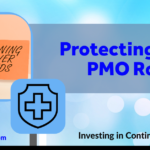It has become a fact that effective project governance is crucial in today’s fast-paced business climate to guarantee that projects are finished on schedule, within budget, and to the satisfaction of all stakeholders. The structure for decision-making and responsibility that project governance offers directs the course of the project and guarantees that it is in line with business or government organizational objectives.
The methods and tools that support project governance change along with the field of project management. This piece will draw a comprehensive analysis of how governments worldwide are changing governance for what it is, how technology has affected and is still affecting the governance system, and the best approach to enhance governance.
Evolving Governance Practices
Emerging Trends in Project Governance
Project governance is a field that is constantly changing due to new approaches, ever-changing global events, shifting expectations from stakeholders, and technological breakthroughs. Conventional project governance frequently depends on inflexible structures and procedures that become unyielding when things change quickly.
Any severe and proactive governance encourages flexibility, ongoing assessment, and iterative development, allowing companies to better adapt to shifting project requirements and stakeholder demands. The emphasis on stakeholder participation is another new trend. Contemporary project governance frameworks acknowledge the significance of including stakeholders at every project lifecycle stage.
This entails open reporting, cooperative decision-making, and frequent communication. Better project outcomes can result from early and frequent stakeholder engagement since it ensures that their requirements and expectations are considered.
The Impact of Technology on Governance
Project governance is undergoing significant change due to technology, whose innovative trend is unending. Utilizing machine learning and artificial intelligence (AI), project data analysis, risk prediction, and resource allocation optimization are all being aggressively integrated into different arms of governance today – and governance projects inclusive.
By offering real-time information and recommendations, these technologies can help project managers make better decisions and achieve better project results. Another breakthrough that affects project governance is blockchain technology. Blockchain technology, which is a product of technological innovations, can offer a visible and safe record of project decisions and transactions, lowering the possibility of fraud and improving accountability.
Blockchain-enabled smart contracts may automate and enforce governance rules, guaranteeing adherence and cutting down on administrative burdens. Such impacts are often seen in countries like Switzerland, the UAE, the United Kingdom, and China, which have succeeded in integrating a larger proportion of technology into their government projects.
Strategies for Continuous Improvement in Governance Projects
Feedback Mechanisms
Requirements for effective feedback mechanisms in project governance are constant improvements. Feedback from stakeholders, clients, and project teams can give important information about what is working and what needs to be improved. Setting up regular feedback loops where project performance is assessed and lessons learned are recorded and disseminated is important.
Surveys and questionnaires are two methods of obtaining input. These can be used to find areas for improvement, gauge stakeholder satisfaction, and get ideas for better governance procedures. Furthermore, frequent feedback sessions—like post-mortem or retrospective meetings—can promote candid conversations and a culture of ongoing learning and development.
Review Cycles and Updates to Governance Frameworks
Governance frameworks need to be updated and examined regularly to stay effective. Establishing review cycles to assess the efficacy and applicability of governance procedures, rules, and instruments is necessary for this. Conducting periodic evaluations guarantees that governance procedures adapt to modifications in the project setting, organizational priorities, and industry norms.
Analyzing performance metrics and Key Performance Indicators (KPIs) is crucial during review cycles to evaluate how governance affects project outcomes. Governance framework updates ought to be influenced by both external best practices and internal input. Assessing governance processes can be enhanced by comparing them to industry norms and gaining knowledge from other companies’ experiences.
Final Thought
Effective project management requires project governance, which provides the framework and effective supervision to guarantee project success. Organizations need to keep up with current developments in project governance and use new technology to improve their governance procedures. Organizations may cultivate a culture of continuous development and guarantee that their project governance procedures stay solid and efficient in a constantly evolving environment by implementing efficient feedback channels and routinely evaluating and upgrading governance frameworks.






